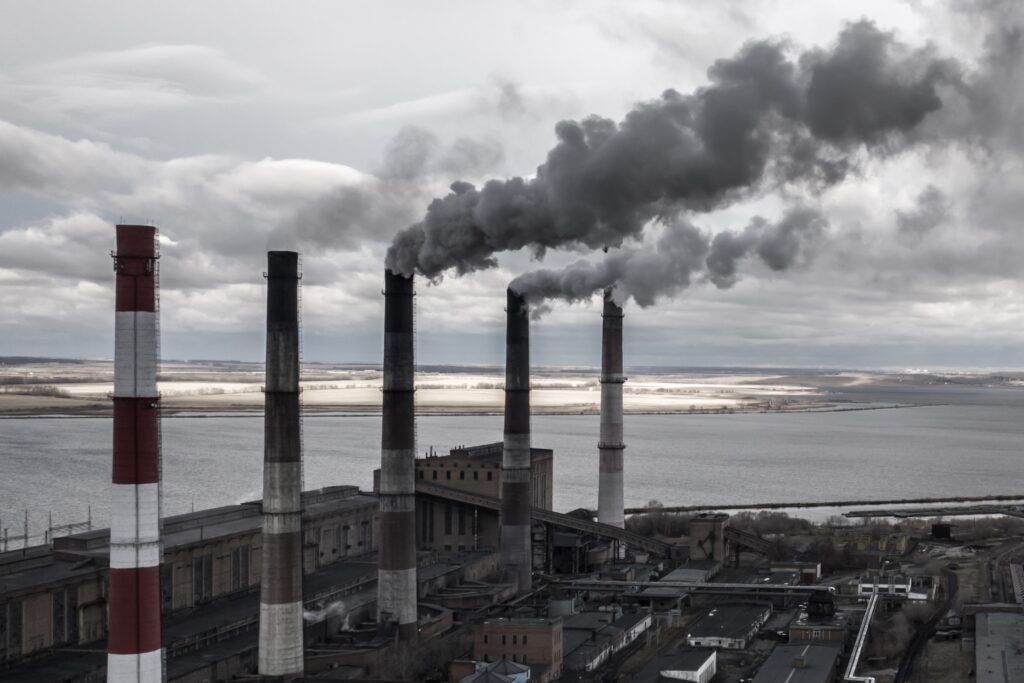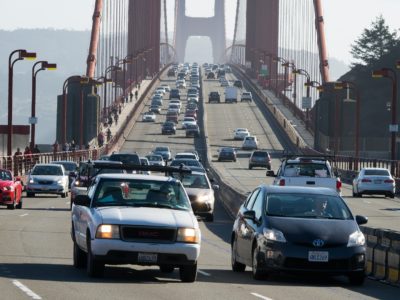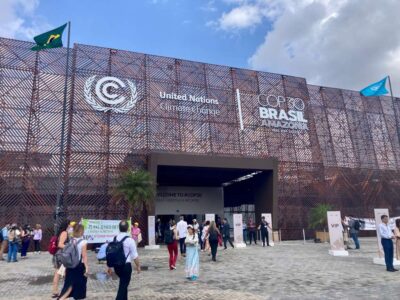Clean Air and the Turbocharged Shadow Docket
Guest Contributors Sean Donahue & Megan Herzog write that coal advocates offer troubling new grounds for the Supreme Court to stay EPA’s carbon pollution standards.

The Supreme Court is currently considering eight emergency (or “shadow docket”) requests from coal advocates (coal-mining companies, coal-burning electricity generators, and allied State attorneys general led by West Virginia) to bar implementation of new EPA rules limiting carbon pollution from coal- and gas-burning power plants while legal challenges to the rules proceed—what is known as a “stay” of the rules. EPA filed its opposition earlier this week.
EPA adopted these rules after the Supreme Court, in West Virginia v. EPA, determined that EPA’s 2015 rule for power-plant climate emissions, known as the Clean Power Plan, exceeded EPA’s statutory authority and violated the major questions doctrine. In July, a panel of D.C. Circuit judges—including Judge Neomi Rao, a former senior official in the Trump Administration—unanimously ruled that the challengers had not met the stringent standards for a stay.
The Turbocharged Shadow Docket
The fact that these stay requests exist at all is a testament to how much the Court has changed. A decade ago, the Court never would have intervened to halt a federal rule before any lower court had considered its merits. Things changed in 2016, when the Court, by an unexplained 5-4 vote, stayed the Clean Power Plan.
Since then, the Court’s emergency-docket activity has skyrocketed. The Court is increasingly invoking emergency powers to block state and federal actions concerning elections, immigration, public health, student debt relief, and more—including, only two months ago, halting implementation of EPA’s “Good Neighbor Rule” limiting smog-forming industrial pollution.
As we have discussed elsewhere, and others have explained in more detail, there are ample reasons to be concerned about the ascendent emergency docket. Among the prime criticisms are that it: (1) invites the Court to decide complex questions of law and fact without full briefing—and sometimes (as in the Clean Power Plan case) with only a few days’ consideration, (2) encourages parties to file even more stay requests, sapping the Court’s attention from merits cases and true emergencies, and (3) evinces a lack of respect for lower courts, which are better positioned to delve into complex rules, and Congress, which directed rulemaking challenges to lower courts in the first instance.
The Court’s turbocharged emergency docket has recently received some well-deserved attention, prompting Justices to proffer further explanation of their practices, and even to take the unusual step of hearing argument before blocking the Good Neighbor Rule. But the stay requests keep piling up, and one skeptic, Justice Kagan, has concluded that the “Court’s shadow-docket decisionmaking … every day becomes more unreasoned, inconsistent, and impossible to defend.”
Crossing a New Line
Whether one thinks the Court’s recent emergency-docket rulings are a sign of an imperial Court, or something less shadowy, everyone should recognize that what the coal advocates are now asking the Court to do would go a giant step further.
There are four core reasons why the Court granting a stay here would be crossing a new line.
1) These pending challenges are all about the facts.
The technical, fact-bound disputes over the power-plant carbon rules distinguish this case from prior Supreme Court stays of pollution rules—and are far from the “important federal question[s]” that are supposed to be the Court’s bailiwick.
Specifically, the current challenges concern whether EPA had good grounds for finding that 90% carbon capture (a technology that traps carbon from a plant’s exhaust so it can be permanently stored underground) is “adequately demonstrated,” and whether a schedule that gives sources until 2032 to comply is reasonable.
These questions of practical feasibility were the subject of thousands of pages of public comments and robust analysis from EPA. The technology is not novel; in fact, EPA has relied on carbon capture in other power-plant standards since 2015. And the feasibility of carbon capture has only become clearer since then, with technical advancements and massive infusions of money from Congress in the Inflation Reduction Act (funds sought by many of the same parties now challenging EPA’s rules).
The power-plant carbon rules raise no statutory-construction or constitutional issue of the sort the Supreme Court normally requires before it exercises its certiorari jurisdiction. In fact, EPA’s rule follows the regulatory path prescribed by the Court in West Virginia, employing a traditional plant-based approach and considering only technologies that cause regulated sources themselves “to operate more cleanly.” There is no doubt that carbon capture is such a technology. (Indeed, as Michigan law professor and historian Rachel Rothschild showed in an amicus brief in the D.C. Circuit, carbon capture closely resembles the sulfur-dioxide scrubbers that have been the basis for various EPA emissions standards since the 1970s.)
As the Solicitor General demonstrated in EPA’s opposition, the stay applicants have failed to show that this rather routine record dispute raises any cert-worthy issue. Granting a stay here would signal that the Court really has become what it has always denied that it is: a court of first view, not review—willing to intervene even in the most record-bound, technical cases at the earliest stage, and far removed from its core competence of resolving important questions of federal law on appeal.
2) The Clean Air Act clearly delegates EPA authority to assess whether a technology is adequately demonstrated.
The stay requests try to manufacture a statutory interpretation issue around EPA’s determination that carbon capture is “adequately demonstrated” under the Clean Air Act. But there is no doubt about the scope of EPA’s authority here. The Act expressly tasks the EPA Administrator with determining whether a pollution-control technology is “adequately demonstrated.” Even the Court’s harshest critics of administrative agencies affirmed in Loper Bright Enterprises v. Raimondo that Congress can delegate to them the authority to make fact-based judgments like this one, subject to judicial review under the deferential arbitrary-and-capricious standard.
Citing Loper Bright, the Solicitor General emphasizes that courts (including the Supreme Court) are to respect Congress’s express delegations to EPA and “may not decide for [themselves] what has been adequately demonstrated or what is achievable.” And the Solicitor General shows that EPA’s determinations about carbon capture were reasonable and grounded in a robust record. Accepting coal advocates’ arguments here would thus be inconsistent with the Court’s own recent decision in Loper Bright.
3) The D.C. Circuit panel explained that challengers lack the irreparable harm necessary to justify emergency relief.
A party seeking a stay needs to demonstrate that it will suffer irreparable harm while the case is being litigated, and that its harm outweighs any harm to other parties and the public from a stay.
Here, unlike in many cases (including the Clean Power Plan and Good Neighbor Rule cases), the D.C. Circuit panel’s unanimous order denying coal advocates’ stay requests was accompanied by several paragraphs of case-specific reasoning. Among other things, the panel explicitly found, after careful review of the record and the evidence submitted by the parties, that challengers face no irreparable harm, because carbon-capture “compliance deadlines do not commence until 2030 or 2032—years after this case will be resolved.”
Notably, the court of appeals has also established an expedited schedule for this case that will have briefing complete by November 1, 2024, further minimizing the chance that the challengers will suffer harm during the Court’s consideration of the merits. (As the Government’s opposition points out, the challengers are free to seek a stay from the Supreme Court after the D.C. Circuit issues its decision—with the benefit of a court of appeals’ analysis, the Supreme Court would be able more meaningfully to address whether a certiorari-worthy issue lies buried somewhere in the fact-heavy case.)
In circumstances like these, traditionally, a stay should and would never be granted. To grant one here would be to show that the Court has, for all practical purposes, disavowed traditional equitable and customary checks on its power. A regime in which the Court operates as de facto first-instance arbiter of important rules would stray so far from the intent of the relevant judicial review and remedies statutes that those provisions may warrant a fresh look by Congress. The Clean Air Act’s specialized review provisions, for example, were constructed to ensure that careful judicial review can coexist with timely protection of public health and environmental values; the Supreme Court’s review role too, should pay heed to that legislative vision.
4) Unwarranted stay requests feed industry’s broader campaign to evade pollution controls.
No doubt one of the reasons that well-resourced coal advocates and their big law firms are filing multiple requests to stay these and other power-plant rules is to fuel their narrative that EPA is pushing statutory limits. After all, these litigants have nothing to lose and everything to gain. The more applications that are filed, the more it looks like an industry on the brink of actual emergency—if not to the Court, then at least in the public eye.
Examining the stay requests more closely, however, prompts the suspicion that industry is aiming to win by yelling the loudest, instead of on the facts and law. Even the number of stay requests is, in some sense, an illusion—as there are separate requests from both regulated companies themselves and trade associations acting on their behalf. (Indeed, as the Public Health Respondents point out, some of the companies seeking a stay are members of multiple other trade associations that are also seeking a stay—as well as of the U.S. Chamber of Commerce which is casting its lot with the coal advocates as amicus curiae supporting a stay.)
The Supreme Court, where “Equal Justice Under Law” is written in stone, is supposed to be above cynical tactics. But the Court opened the door to profligate emergency-claiming by abandoning its historic restraint—and compounded the problem in Ohio by abandoning its responsibility to weigh the equities and instead simply declaring that there were weighty interests “on both sides.” Granting a stay in the latest power plant case would reinforce the impression that industry can block sensible and lawful controls if it kicks up enough dust—thereby incentivizing more emergency filings, which are already at an historic high.
***
The Court’s stay of the Clean Power Plan in 2016 initiated a new shadow-docket era—and the Court is still reckoning, uneasily, with the consequences. It is not surprising that the opportunities for quick High-Court victories before the first merits brief has even dropped has invited litigants (especially trade associations, political entrepreneurial state officials, and deregulation impact litigators) to press the Court for ever more ambitious and unusual interventions. Staying EPA’s new power-plant carbon rules here would mark an alarming and striking new phase.
Sean H. Donahue & Megan M. Herzog are partners at Donahue, Goldberg & Herzog, which represents the Environmental Defense Fund, an amicus curiae in the power-plant standards litigation in the D.C. Circuit.







Reader Comments